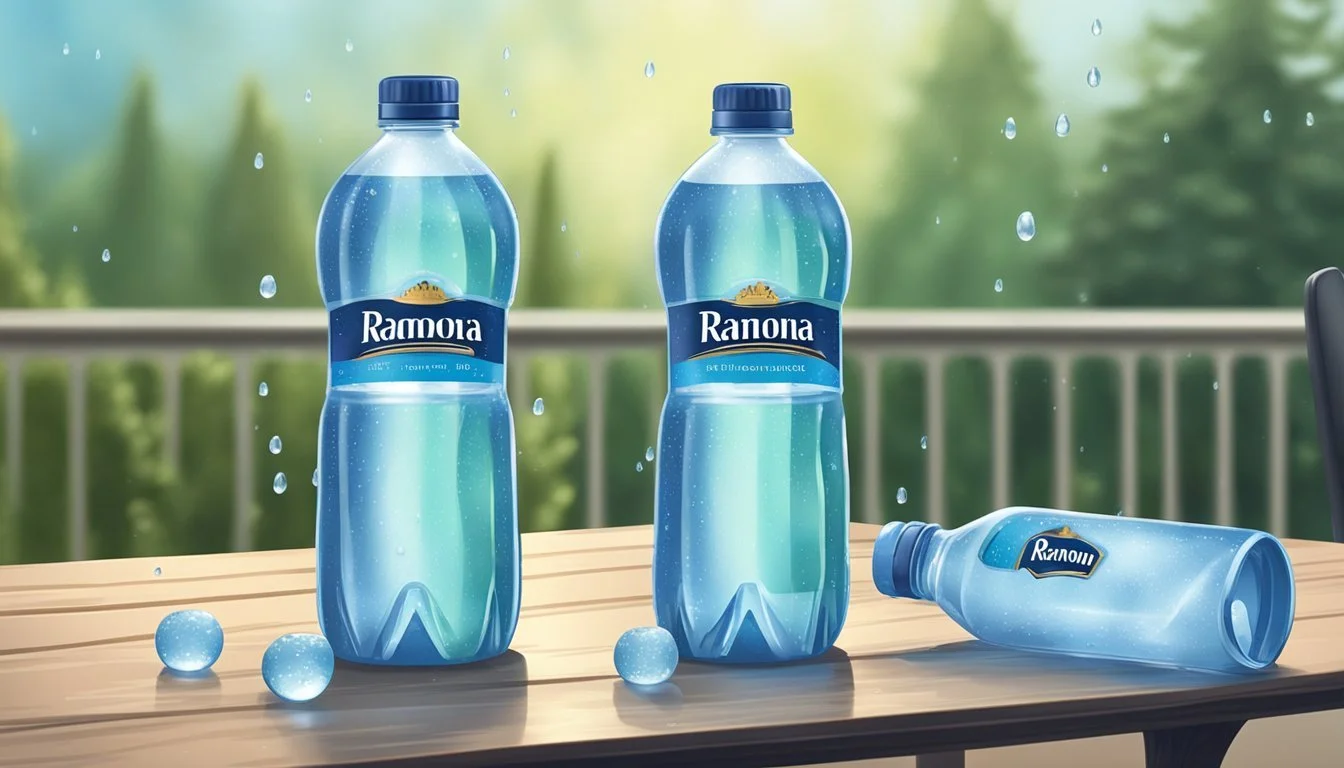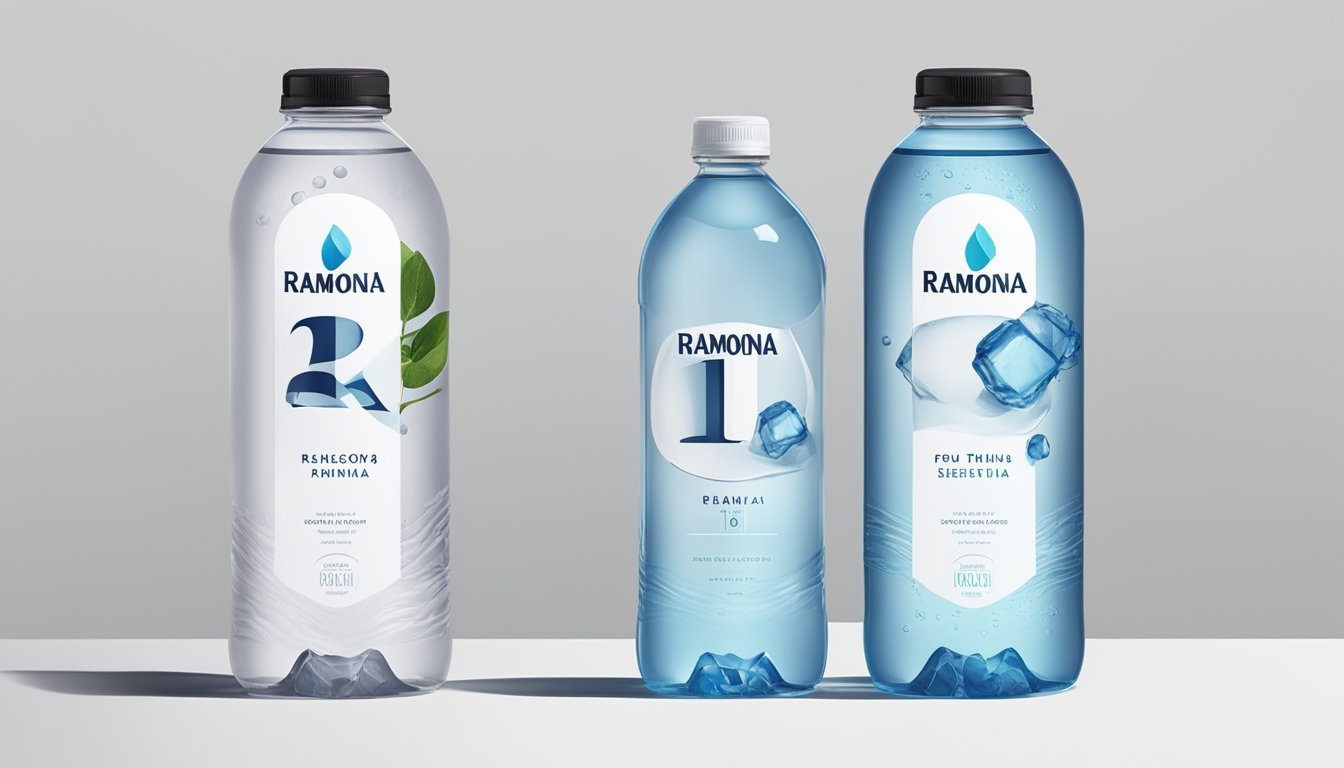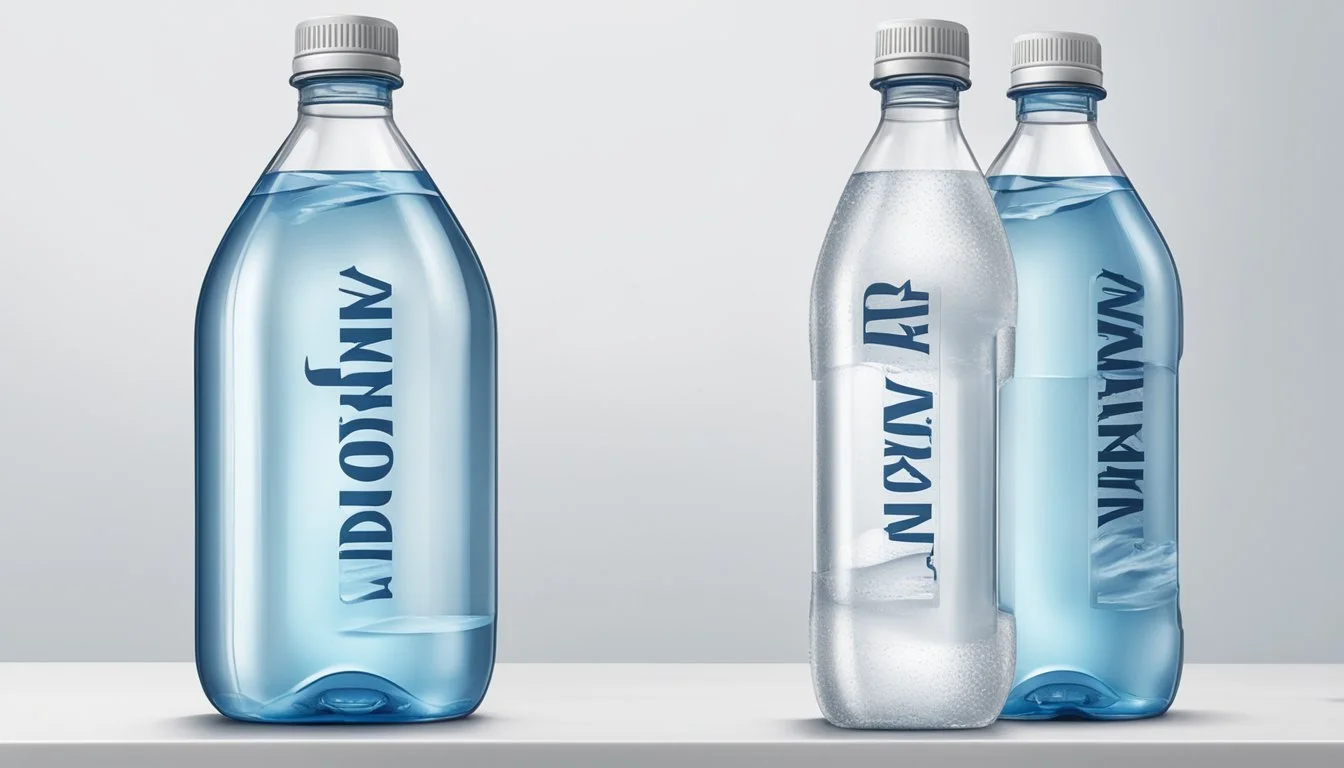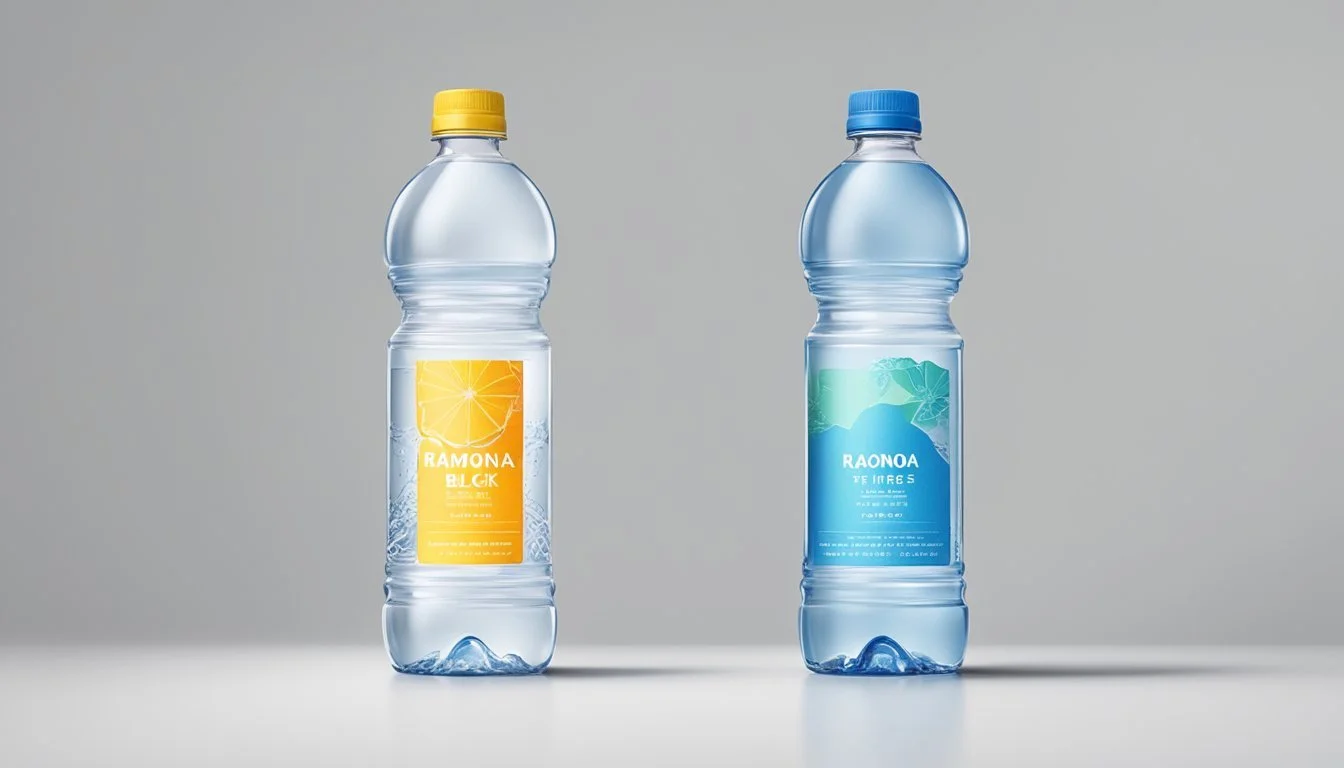Ramona vs. Blk
Which Bottled Water is Better for You?
Bottled water is a booming industry, with brands constantly vying for the top spot in the marketplace. Two standout names, Ramona and Blk, have captured consumer interest for different reasons. Ramona offers a crisp flavor and promotes sustainability with its use of recycled materials for plastic bottles. It's a practical choice for those looking for both great taste and eco-friendly packaging.
On the other hand, Blk. water distinguishes itself with its unique appearance and potential health benefits. Known for its deep obsidian hue, Blk. water contains fulvic trace minerals, which are suggested to offer additional health advantages. This distinct black water challenges the expectations of what bottled water should look like, making it appealing for the health-conscious and curious alike.
When choosing between the two, it ultimately comes down to personal preference and priorities. If sustainability and a light, crisp taste top your list, Ramona is your go-to. For those intrigued by innovation and potential health perks, Blk. water stands as a fascinating option.
Understanding Bottled Water
Bottled water varies based on its source and method of filtration. It's essential to know the different types, the bottling process, and the health and safety standards involved.
Types of Bottled Water
There are several types of bottled water, each with distinct characteristics. Mineral water must contain a specific amount of dissolved minerals and is sourced from mineral springs, often naturally filtered. Spring water comes from underground formations and flows naturally to the surface. Purified water undergoes processes like distillation or reverse osmosis to remove impurities, making it suitable for those concerned about contaminants. Each type offers unique benefits for consumers.
The Bottling Process
The bottling process involves several steps to ensure the water is safe and of high quality. First, the water is sourced—whether from a spring, well, or municipal supply. It then goes through filtration processes, which might include natural filtration methods or mechanical systems like carbon filters. After purification, the water is packaged in containers, often plastic bottles or glass bottles. Glass is seen as more eco-friendly due to its recyclability, while plastic is common for its convenience.
Health and Safety Standards
Bottled water companies must adhere to strict health and safety standards to protect consumers. These standards are set by governing bodies such as the FDA or similar regulatory agencies worldwide. The water is regularly tested for contaminants, ensuring it meets safety guidelines. Packaging materials are also regulated to prevent chemical leaching into the water, crucial for maintaining both safety and quality.
Examining the Brands: Ramona and Blk
Ramona and Blk are two distinct bottled water brands with unique origins and sourcing methods. This section discusses their brand history and origin, as well as their water sources and sourcing methods.
Brand History and Origin
Ramona bottled water is known for its emphasis on sustainability. The brand focuses on using recycled materials for their plastic bottles.
Blk, on the other hand, is recognized for its unique black water, which gets its color from fulvic minerals. Blk has branded itself as a high-end hydration source, appealing to consumers looking for premium water options.
Water Sources and Sourcing Methods
Ramona sources its water from natural springs, ensuring a fresh and pure taste. They also prioritize environmentally friendly practices in their sourcing methods.
Blk's water is infused with fulvic minerals, which are believed to offer health benefits. The brand sources its water from high-quality natural sources and infuses it with these minerals to create its signature black color and distinctive mineral content.
Composition and Quality
Ramona and blk. water offer distinct profiles influenced by their mineral content, pH levels, and purification processes. A closer examination reveals nuanced differences affecting both taste and potential health benefits.
Mineral Content Analysis
Ramona bottled water emphasizes sustainability by using recycled materials, but its composition's real highlight is its balanced mineral profile. This includes essential minerals such as calcium and magnesium, which contribute to its refreshing taste. The specific mineral content helps provide a crisp and neutral flavor.
In contrast, blk. water is infused with fulvic trace minerals, which give it a unique black appearance. These minerals are organic acids found in soil and rotting plants that some believe offer health benefits.
Element Ramona blk. Water Calcium Present Minor Magnesium Present Minor Fulvic Minerals Absent Present (major)
pH Levels and Alkalinity
Ramona water maintains a near-neutral pH, typically around 7, making it a versatile choice for daily consumption. The balanced pH supports overall hydration without significantly impacting the body’s natural pH balance.
blk. water stands out with an alkaline pH, often ranging from 8 to 9. Its higher alkalinity may appeal to those seeking to neutralize acidity in their diets. This property can be beneficial, particularly for those looking to support better hydration or combat acid reflux.
Monitoring pH levels is crucial for those with specific health concerns or dietary preferences.
Purity and Cleanliness
Ramona ensures purity through a meticulous purification process involving multiple stages like reverse osmosis and distillation. This process effectively removes impurities and contaminants, ensuring a clean and safe product.
blk. water employs a different approach, leveraging its natural source and the infusion of fulvic acid to boost its cleanliness claims. While blk.’s unique composition is visually distinctive, the natural filtering process through layers of organic matter aims to maintain high purity levels.
Both brands prioritize cleanliness and purity, though their methods and visual presentations differ significantly, appealing to various consumer preferences.
Taste Profile and Drinking Experience
Ramona and Blk offer distinct taste profiles and drinking experiences, appealing to different preferences and priorities of bottled water enthusiasts.
Flavor Characteristics
Ramona: Known for its crisp and clean taste, Ramona water has a neutral pH level, hovering around 7.0, which aligns well with a balanced diet. It carries a light minerality, thanks to the presence of calcium and magnesium, which adds subtle depth to its flavor without being overpowering.
Blk: Blk water is unique due to its dark color, derived from added fulvic minerals. Despite its unconventional appearance, it surprisingly has a smooth and slightly earthy taste. These minerals can impart a faint, natural flavor profile that is distinct yet not too strong.
Mouthfeel and Aftertaste
Ramona: The mouthfeel of Ramona water is typically smooth and refreshing. It leaves little to no aftertaste, making it suitable for those who prefer a clean finish. The natural minerals present do not create any noticeable residue, contributing to a pleasant drinking experience.
Blk: Blk water has a slightly thicker mouthfeel compared to standard bottled waters, owing to the fulvic mineral content. This can result in a mildly richer sensation as it’s consumed. Some drinkers may notice a fleeting, earthy aftertaste, which might not appeal to everyone.
Personal Preference in Water
Personal preference in bottled water often hinges on factors like flavor and mouthfeel. For those who appreciate a conventional, crisp taste with minimal aftertaste, Ramona stands out as a preferable choice. It’s ideal for everyday hydration and pairs well with meals due to its balanced profile.
On the other hand, Blk caters to adventurous drinkers looking for something unique. Its fulvic mineral content not only adds a different dimension to the taste but also introduces potential health benefits attributed to these minerals. The slightly richer mouthfeel and faint earthy aftertaste might suit those open to exploring non-traditional options.
Ultimately, the choice between Ramona and Blk boils down to individual taste preferences and the desired drinking experience.
Health Impact and Benefits
When comparing the health impacts of Ramona and blk., it is crucial to focus on their respective hydration capabilities, essential minerals, and effects on gut health. Each brand offers unique characteristics that cater to different health needs.
Hydration and Electrolytes
Ramona is known for its slightly alkaline pH level, around 7.5 to 8, providing a crisp and refreshing taste. This alkalinity can support better hydration by potentially enhancing fluid absorption.
blk. distinguishes itself with its infusion of fulvic acid, which may support hydration by enhancing the transport of electrolytes in the body. Its unique composition can help balance electrolyte levels, contributing to regular hydration, especially after physical activities.
Essential Minerals and Nutrients
Ramona contains essential minerals like calcium and magnesium, which aid in bone health and muscle function. These minerals are vital for maintaining overall wellness, supporting various bodily functions, and contributing to a balanced diet.
blk. water's fulvic acid infusion offers additional minerals and trace elements. These nutrients can contribute to immune system support and overall vitality. The presence of fulvic trace minerals may also aid in nutrient absorption, enhancing the body's ability to utilize vitamins and minerals from other food sources.
Link Between Water and Gut Health
Ramona's slightly alkaline nature might influence digestive processes positively, potentially reducing acidity and promoting a balanced gut environment. The stable pH level can assist in maintaining an optimal digestive system, contributing to better gut health.
blk., infused with fulvic acid, can impact gut health by potentially improving the balance of the gut microbiome. Fulvic acid is known for its ability to act as a prebiotic, fostering the growth of beneficial probiotics. This balance is essential for digestive health and can aid in reducing inflammation and promoting overall gut wellness.
Environmental Considerations
Both Ramona and Blk bottled water brands are mindful of their environmental impact, focusing on sustainable practices and reducing their carbon footprints. Key areas of concern include packaging options, recycling, and plastic waste management, as well as the overall carbon footprint of their products.
Eco-Friendly Packaging Options
Ramona uses recyclable PET plastic for its bottles, which helps mitigate the negative impact of single-use plastics. Additionally, their labels and caps are designed to be easily removed during the recycling process, enhancing the efficiency of recycling.
Blk, on the other hand, has embraced biodegradable and compostable materials for certain product lines. They have worked to decrease plastic content by opting for cardboard and plant-based materials in their packaging. This initiative reflects their commitment to reducing plastic dependency.
Recycling and Plastic Waste
Recycling efforts are critical for both brands.
Ramona encourages consumers to recycle by providing clear recycling guidelines on their packaging. They also partner with organizations to support extensive recycling programs. The focus is on reducing plastic waste by ensuring that bottles re-enter the recycling stream.
Blk places a strong emphasis on using post-consumer recycled (PCR) plastic in manufacturing new bottles. This reduces the amount of new plastic introduced into the environment. Their initiative has helped lower the accumulation of plastic waste.
Carbon Footprint of Bottled Water
The production and distribution of bottled water contribute to carbon emissions.
Ramona has implemented carbon offset programs to neutralize the emissions created during the manufacturing and transportation processes. They invest in renewable energy projects to counteract their carbon footprint.
Blk measures their carbon footprint throughout the product lifecycle. They aim to minimize energy use in production by optimizing logistics and incorporating energy-efficient technologies. Blk also publishes reports on their carbon emissions, adhering to transparency standards.
Both brands are working towards reducing their environmental impact through various strategies, including eco-friendly packaging, improved recycling techniques, and managing their carbon footprints. Each initiative plays a significant role in fostering sustainability within the bottled water industry.
Accessibility and Availability
Ramona and Blk are evaluated based on where they can be purchased and their cost-effectiveness. Understanding the retail presence and pricing is crucial for consumers seeking the most accessible and valuable option.
Retail Presence in Stores and Online
Ramona is widely available in grocery stores, making it an accessible option for many consumers. You'll often find it at well-known chains like Whole Foods and Safeway. Convenience stores also stock Ramona, adding to its easy availability.
Blk, in contrast, has a unique appeal that extends beyond traditional grocery stores. It's found in specialty health food stores and some high-end retailers. Online availability for Blk is strong, with major platforms like Amazon, making it easy for consumers to purchase without leaving home.
Ramona can also be bought online via various platforms such as the company's website and delivery services like Instacart, further enhancing its reach. In addition, Ramona's physical presence in a wide range of store types makes it a convenient choice for quick, on-the-go purchases.
Price Comparison and Value
When comparing price points, Ramona tends to be more affordable, often reflecting its presence in mass-market retailers. A 500ml bottle might cost around $1.50 to $2.00, making it a good option for daily hydration without breaking the bank.
Blk, on the other hand, often commands a higher price. A 500ml bottle may range from $3.00 to $4.00, influenced by its positioning as a premium product and its unique selling point of containing fulvic minerals.
From a value perspective, Ramona offers excellent accessibility at a lower cost, whereas Blk appeals to those willing to spend more for potentially enhanced mineral content. Each brand caters to different segments of the market, balancing accessibility with perceived benefits.
Both brands highlight their unique aspects, and the decision ultimately depends on the consumer's preference for price versus special features. Ramona's affordability and wide reach cater to everyday users, while Blk's premium appeal attracts those seeking a distinctive product.
Consumer Insights
Ramona and blk. Water have gained attention for their unique qualities and offerings. Consumer reviews and expert opinions provide a detailed look into how these two brands stack up in the bottled water market.
Customer Reviews and Ratings
Customer reviews for Ramona water often highlight its crisp flavor and wide availability. Many find it refreshing with no noticeable aftertaste, making it a popular choice for those seeking a reliable hydration option.
In contrast, blk. Water receives mixed reviews due to its unconventional appearance and taste. Some praise its infusion of fulvic trace minerals, claiming potential health benefits. However, its deep obsidian hue and unique flavor can be off-putting for others, leading to a more divided consumer base.
A snapshot of average ratings:
Brand Average Rating (out of 5) Common Positive Feedback Common Negative Feedback Ramona 4.3 Crisp flavor, good availability Slight aftertaste blk. Water 3.8 Unique health benefits Unusual flavor, high price
Expert Opinions and Water Sommeliers
Experts and water sommeliers often approach Ramona and blk. Water with a focus on taste and mineral content. Ramona is typically appreciated for its balanced mineral profile, contributing to its crisp and clean taste.
Water sommeliers note that blk. Water stands out for its fulvic acid content and deep color. These characteristics claim to offer unique health benefits, such as improved nutrient absorption and detoxification. However, the taste can be polarizing, with some experts describing it as an acquired taste.
Key expert insights:
Ramona: Favored for its reliable, refreshing taste. A good choice for everyday hydration.
blk. Water: Noted for its health benefits and unique appearance. Suitable for those seeking novelty and potential wellness advantages.
More About Ramona
Kirkland Signature vs Ramona: Which Bottled Water is Better?
Mountain Valley Spring Water vs Ramona: Which Bottled Water is Better?
Richard's Rainwater vs Ramona: Which Bottled Water is Better?
Whole Foods Italian Still Mineral water vs Ramona: Which Bottled Water is Better?







